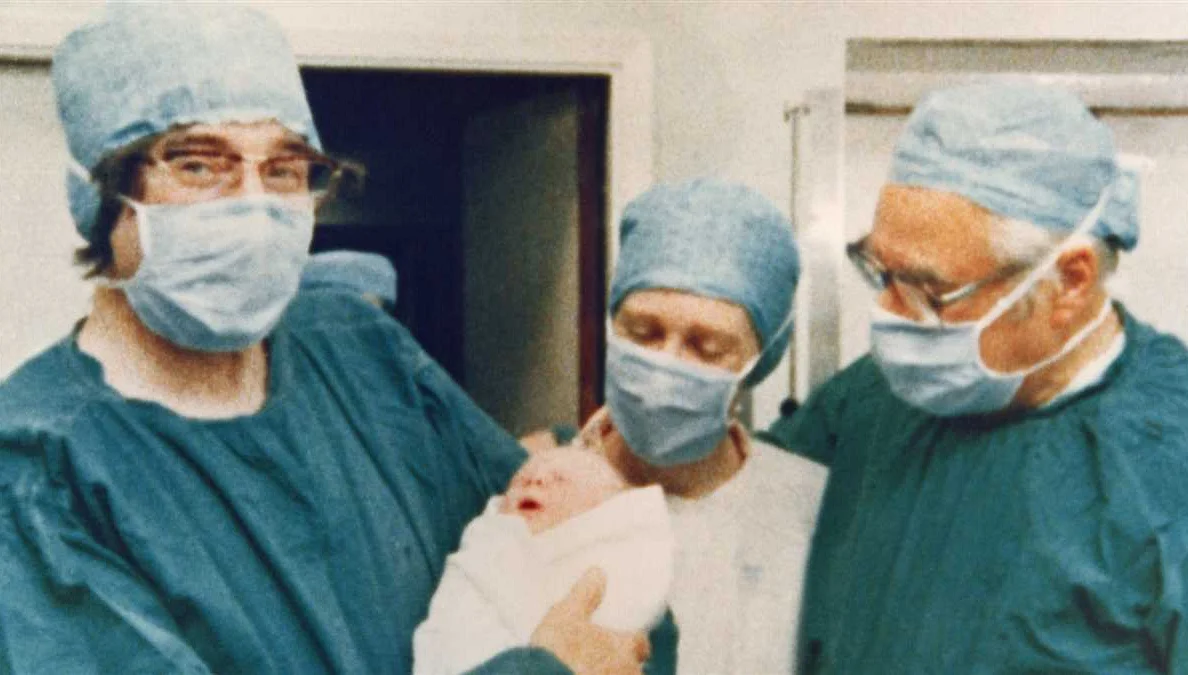The First Genetically Selected Test-Tube Baby Was Born
Содержимое
Learn about the groundbreaking birth of the first genetically selected test-tube baby and the implications it has for reproductive technology and genetic engineering.
In the world of reproductive medicine, there are certain moments that mark significant breakthroughs and change the course of history. One such milestone was the birth of the first genetically selected test-tube baby. This remarkable event represented a turning point in the field, paving the way for a future where genetic disorders could be prevented before birth.
Before the birth of the first genetically selected test-tube baby, couples faced the fear of passing on inheritable diseases to their children. This groundbreaking achievement offered hope to countless families struggling with the burden of genetic disorders. The ability to select embryos free from these diseases brought a new level of control and assurance to the process of assisted reproduction.
The journey to this momentous breakthrough was challenging and required the collaboration of experts from various disciplines. Scientists, fertility specialists, and geneticists worked tirelessly to develop the techniques and technologies necessary to screen and select embryos with precision. Their pioneering efforts opened the door to a new era in reproductive medicine, where the dream of healthy offspring became a reality for many.
The Origins of Reproductive Medicine
Reproductive medicine can be traced back to ancient civilizations, where various methods were used to address issues of fertility and childbirth. In ancient Egypt, for example, it was believed that male fertility was directly related to the god Min, and thus offerings were made to him to ensure successful pregnancies. In ancient Greece, Hippocrates, often referred to as the “father of medicine,” explored the understanding of female reproductive anatomy and proposed treatments for infertility.
Advancements in reproductive medicine continued throughout history. In the 17th century, William Harvey’s discovery of the circulation of blood laid the foundation for understanding how the female reproductive system functioned. In the 19th century, scientists began to investigate the role of hormones in reproduction, leading to the development of fertility treatments such as hormone replacement therapy.
The 20th century saw significant breakthroughs in reproductive medicine. In 1978, the birth of Louise Brown, the first genetically selected test-tube baby, revolutionized the field. This milestone was made possible through the development of in vitro fertilization (IVF) techniques by Robert Edwards and Patrick Steptoe. IVF allowed for the conception of a child outside of the womb, opening up possibilities for couples struggling with infertility.
Since then, reproductive medicine has continued to advance. Techniques such as preimplantation genetic testing and sperm and egg donation have become more common, offering hope to couples facing genetic disorders or infertility. The field continues to evolve, with ongoing research and advancements aimed at improving success rates and addressing ethical considerations.
Overall, the origins of reproductive medicine can be traced back to ancient times, where early civilizations recognized the importance of fertility and childbirth. Through centuries of research and advancements, the field has made remarkable progress, culminating in the birth of the first genetically selected test-tube baby.
Advancements in In Vitro Fertilization

Since the birth of the first genetically selected test-tube baby, there have been significant advancements in the field of in vitro fertilization (IVF). In vitro fertilization, or IVF, is a method of assisted reproductive technology that involves the fertilization of an egg with sperm outside of the body. This revolutionary technique has allowed millions of couples worldwide to overcome infertility and achieve their dream of parenthood.
One of the major advancements in IVF is the development of preimplantation genetic testing (PGT). PGT allows for the screening of embryos for genetic abnormalities before they are transferred to the uterus. This has greatly increased the chances of successful pregnancy and reduced the risk of genetic disorders in children born through IVF.
Another significant advancement in IVF is the use of frozen embryos. Cryopreservation techniques have improved over the years, allowing embryos to be stored for extended periods of time without compromising their viability. This has given couples the option to undergo multiple IVF cycles using the same batch of embryos, increasing their chances of pregnancy success.
Furthermore, the development of time-lapse imaging systems has revolutionized embryo monitoring during IVF. These systems allow embryologists to observe the development of embryos in real-time, providing valuable information about their quality and viability. This technology has helped improve embryo selection and increase pregnancy rates in IVF procedures.
Additionally, the use of intracytoplasmic sperm injection (ICSI) has become a common practice in IVF. ICSI involves the injection of a single sperm directly into an egg, bypassing any potential barriers to fertilization. This technique has been particularly beneficial for couples with male factor infertility, as it has significantly improved fertilization rates and success rates in IVF procedures.
Overall, the advancements in in vitro fertilization have had a profound impact on reproductive medicine. Through techniques such as preimplantation genetic testing, frozen embryo transfer, time-lapse imaging, and intracytoplasmic sperm injection, IVF has become a more effective and accessible treatment option for couples struggling with infertility. These advancements continue to push the boundaries of reproductive medicine and offer hope to those seeking to start a family.
The Idea of Genetic Selection
Genetic selection refers to the process of intentionally choosing certain genes or genetic traits in order to create offspring with desired characteristics. This concept has been a subject of debate and controversy in the field of reproductive medicine.
Proponents of genetic selection argue that it can help prevent the transmission of genetic disorders and diseases to future generations. By identifying and selecting embryos or gametes with healthy genes, individuals can reduce the risk of passing on harmful genetic mutations.
However, critics of genetic selection express concerns about the ethical implications of playing “God” by manipulating human genetics. They argue that this approach could lead to a society that values certain genetic traits over others, potentially resulting in discrimination and inequality.
Despite the ethical debates surrounding genetic selection, its potential benefits cannot be ignored. From a medical standpoint, it offers the possibility of preventing debilitating genetic diseases and improving the overall health of future generations. Additionally, genetic selection could also be used to enhance certain desirable traits, such as intelligence or athletic ability.
It is important to note that genetic selection is a complex and evolving field. With advancements in reproductive technology and genetic engineering, the possibilities and implications of genetic selection continue to expand. As researchers and ethicists grapple with the ethical dilemmas posed by this technology, it remains to be seen how genetic selection will shape the future of reproduction and human genetics.
A Groundbreaking Procedure

The development of in vitro fertilization (IVF) marked a major breakthrough in reproductive medicine. It allowed scientists to overcome various infertility issues and paved the way for the birth of the first genetically selected test-tube baby. The procedure involved the careful manipulation and combining of sperm and egg cells outside of the human body, in a laboratory setting.
IVF begins with the extraction of eggs from a woman’s ovaries. These eggs are then fertilized with sperm in a petri dish, creating embryos. The embryos are then carefully monitored and evaluated for their genetic makeup and overall health. Only the healthiest embryos, free of genetic abnormalities, are selected for implantation.
The ability to select embryos based on their genetic characteristics was a groundbreaking achievement. It allowed parents who were carriers of genetic disorders to avoid passing them on to their children. This breakthrough was particularly significant for couples where both partners carried the same genetic condition.
The first genetically selected test-tube baby was born on July 25, 1978. She was conceived using IVF and preimplantation genetic diagnosis (PGD), a technique that allowed scientists to analyze the genetic makeup of embryos before implantation. This revolutionary milestone opened up new possibilities for couples struggling with infertility and genetic disorders.
The success of the procedure sparked a wave of advancements in reproductive medicine. Today, IVF and genetic selection techniques have become common practice in fertility clinics around the world. They have helped countless couples achieve their dream of having a healthy baby, while also reducing the risk of passing on genetic disorders.
In conclusion, the development of IVF and the birth of the first genetically selected test-tube baby marked a significant milestone in reproductive medicine. This groundbreaking procedure has provided hope and opportunities for couples facing infertility and genetic challenges, changing the landscape of reproductive health.
Ethical and Legal Considerations

The birth of the first genetically selected test-tube baby marks a significant advancement in reproductive medicine. However, it also raises important ethical and legal questions that need to be carefully considered.
One major ethical concern is the potential for eugenics, as genetic selection opens the door to choosing specific traits in an unborn child. This raises questions about the value and dignity of every human life, as well as the potential for discrimination based on genetic characteristics.
Another ethical consideration is the issue of informed consent. Parents undergoing genetic testing and selection must fully understand the risks and benefits involved in the process. They should be provided with comprehensive information to make an informed decision, and their consent should be voluntary and not influenced by external pressures.
From a legal standpoint, there are also important considerations. The rights of the child, the parents, and the donor (if applicable) need to be protected. Clear guidelines should be established regarding the ownership and use of genetic information, as well as the potential for third-party involvement in the process.
Furthermore, there is a need for international cooperation and regulation in the field of genetically selected test-tube babies. As this technology becomes more accessible globally, it is crucial to establish common ethical and legal standards to ensure the responsible and ethical use of this technology.
In conclusion, while the birth of the first genetically selected test-tube baby is a groundbreaking achievement, it also raises significant ethical and legal considerations. It is essential for society to carefully navigate these issues to ensure the responsible and ethical use of reproductive technologies moving forward.